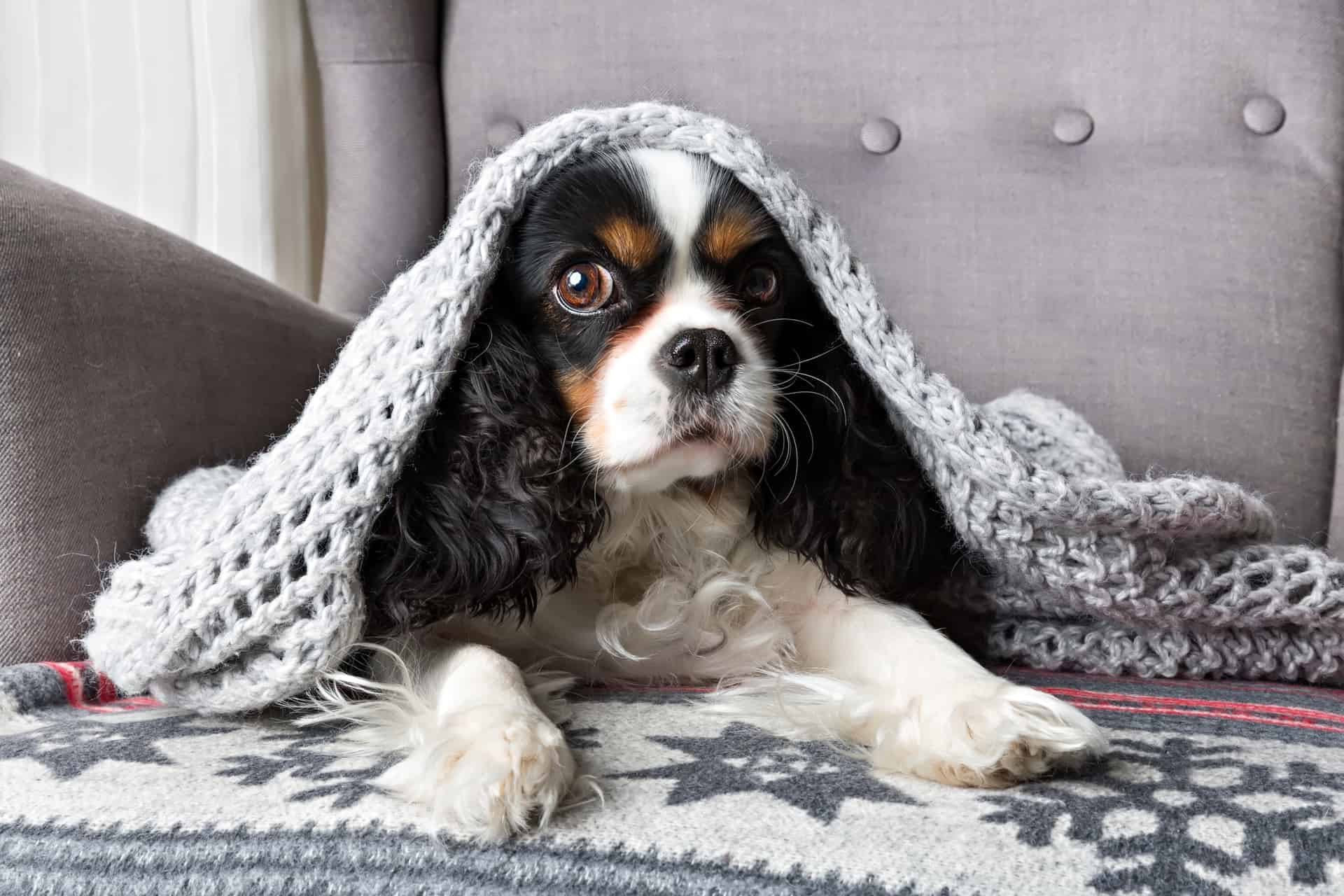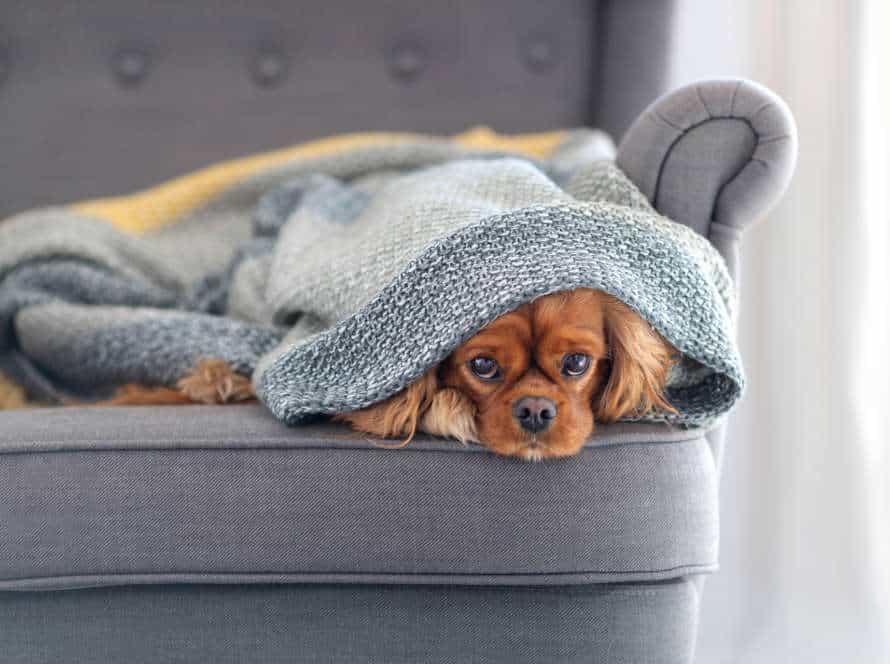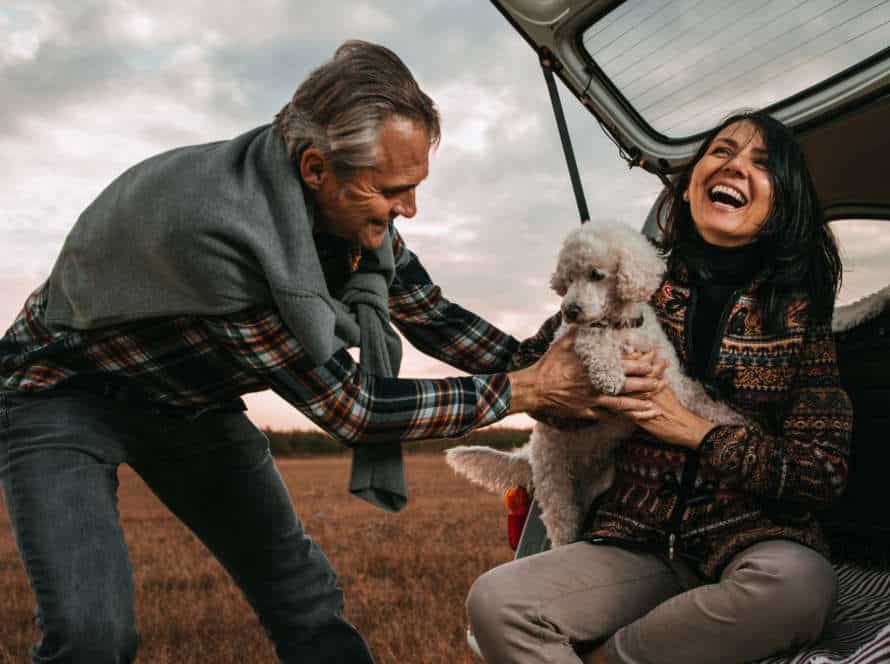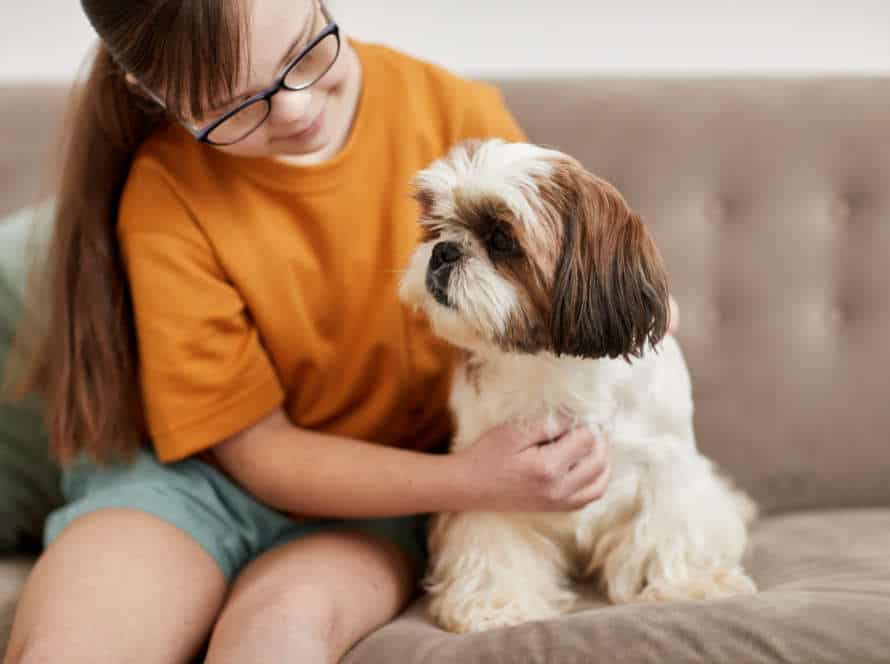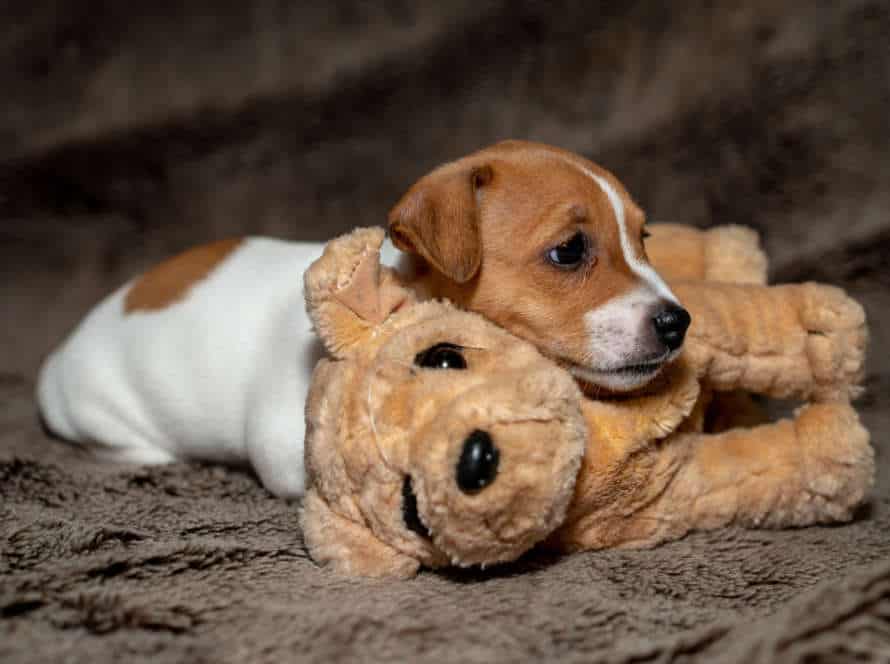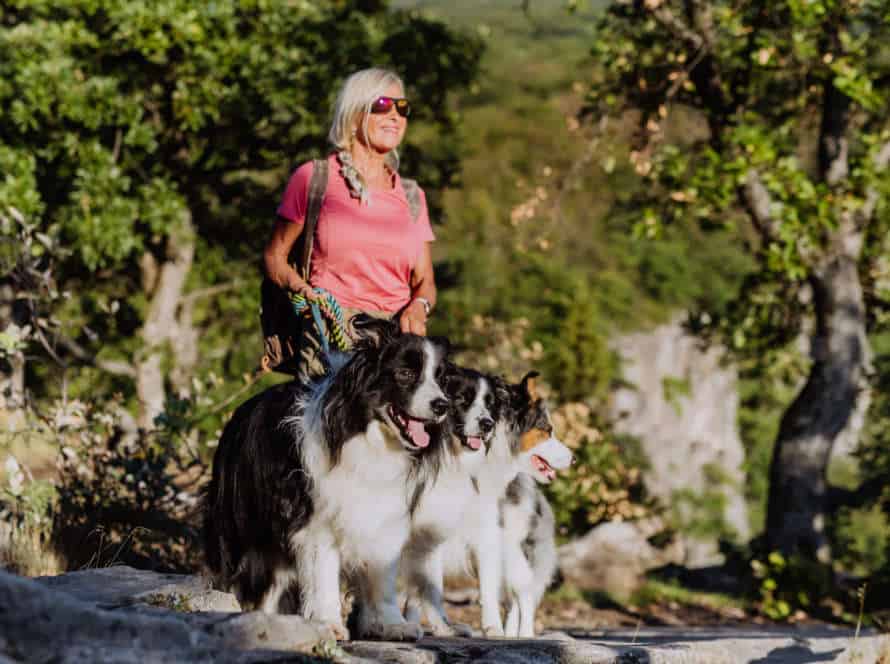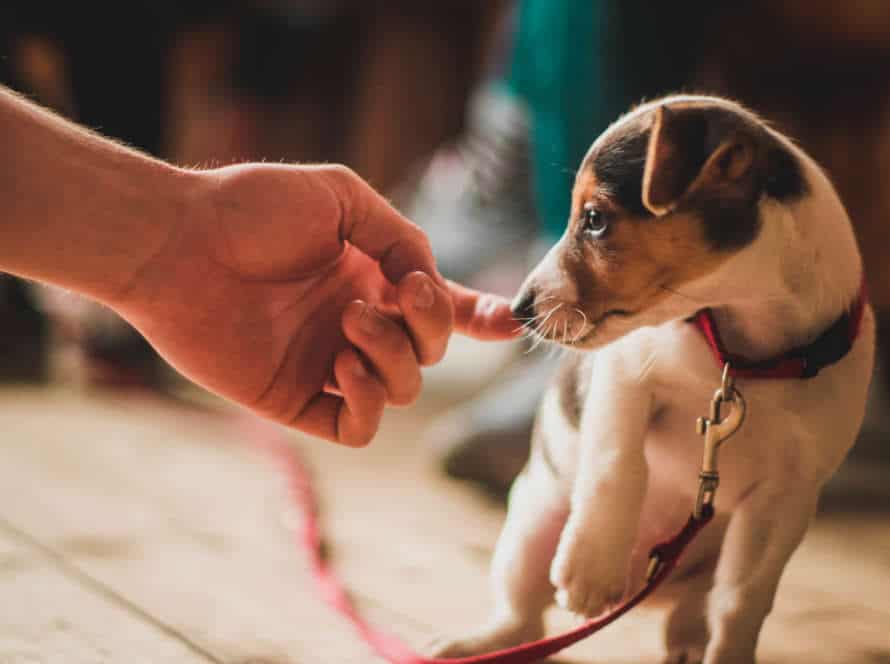Creating a Safe Haven for Your Fearful Dog
Creating a secure space for your scared pooch is important. It makes them feel safe and relaxed when things are tense. Here are some tips to help you set up their safe haven:
- Choose a quiet and not-so-busy part of your house.
- Put a crate or playpen in the area. This will be the pup’s safe spot when scared.
- Put comfy bedding, toys, and treats in their safe spot – making it a positive place for them.
- Keep it clean and stocked with food and water.
- Let natural light and fresh air in.
- Play calming music or use pheromone diffusers.
- Don’t punish them or make them face fears. Be patient and use positive reinforcement to help them feel safe.
Understanding Fearful Behavior in Dogs
Dogs can get scared for many reasons. It could be a fear of something new, loud noises, or people they don’t know. To make sure your dog is safe and happy, it’s important to understand why they’re afraid. Here are some common sources of fear in canines and how to create a secure environment for them:
Types of Fear in Dogs
Fear is a feeling dogs know well. Here are the common types of fear in dogs and how to help:
- Social fear – Fear of people and other animals. It can be from lack of socialization or a bad experience.
- Noise fear – Fear of loud sounds like thunder, fireworks, or a vacuum cleaner. This can be from a trauma or genetics.
- Separation anxiety – Fear of being left alone. This can cause disruptive behavior and a lot of barking or whining.
- Object fear – Fear of things like cars, bikes, or leashes. It could be from a bad experience or not being used to them.
It’s important to recognize the type of fear your pup is feeling. To create a secure environment for your pet, you can give them a cozy spot, introduce them slowly to their fears, and get assistance from a professional if needed.
Symptoms of Fear in Dogs
Dogs are loyal, loving pals, yet they can also suffer from fear and anxiety like people. It is essential for dog owners to recognize the typical signs of fear in dogs, to create a secure place for them. Here are some of the popular indicators of fear in dogs:
- Trembling/shaking
- Concealing/crouching
- Aggression/growling
- Too much barking
- Peeing/pooping in the house
- Refusing to eat/drink
- Dilated pupils/rapid breathing
- Excessive licking/chewing
- Tail tucked between legs
Knowing these symptoms helps owners make a safe and comforting atmosphere for their dogs. Owners can also give positive reinforcement, patience, and love, to aid their dogs to overcome their fears.
Causes of Fear in Dogs
Fearful behavior in dogs is very common. It can be caused by many things. To properly help them, it’s important to know the cause. Possible causes include:
- Not enough socializing with people and animals.
- Traumatic experiences like abuse or neglect.
- Loud noises or sudden movements.
- Separation anxiety.
- Genetics or breed tendencies.
- Medical conditions or chronic pain.
To help a fearful dog, give them a safe place they can feel secure. Positive reinforcement training, counter-conditioning, and desensitization techniques can also help build confidence and reduce fearful behavior.
Creating a Safe Space for Your Dog
For your anxious pup, crafting a soothing and secure environment is a must. Create a nook in the living room or a secluded spot in the backyard so your pup feels secure wherever they go.
Here are some more tips to make a safe space for your pup:
Choosing the Right Location
When setting up a safe space for your dog, finding the best location is essential for their relaxation and safety. Some tips for accomplishing this:
- Avoid places with high foot traffic, where your pup could be exposed to too much noise or activity.
- Choose a spot with privacy and few people around.
- Remember size too, making sure they have enough room to move.
- The area should also be well-lit and have good ventilation.
- If your dog is fearful, pick a quiet area far from street noise or loud machinery. There should be no sharp edges or anything that might startle them.
Providing Comfortable Bedding and Toys
Creating a safe space for your pup is essential. Here’s how to make it comfy:
- Choose a bed that fits and is soft. Memory foam or orthopedic beds are good for older or injured dogs.
- Toys to keep them entertained. They can relax and feel secure.
- Incorporate smells that are familiar. Your scent on blankets or clothes can help ease anxiety.
- Make it cozy. Clean and free from noise. A blanket or pillow can be added.
- Provide comfy bedding and toys. This will make your pup feel safe and relaxed.
Creating a Den-Like Space
Crafting a den-like area for your pup can give them a secure, comfy environment – especially if they’re anxious or scared. A den can give your pup a place to hide when feeling overwhelmed. Here are a few tips to make a den-like space for them:
- Choose a peaceful spot in your home, away from loud areas.
- Use a crate, tent, or covered bed as the den.
- Add soft linens, blankets, toys, and familiar smells.
- Keep it tidy and odor-free.
- Use positive reinforcement like treats or toys to get your pup to use the area.
- Always give your pup free access to the den and don’t make them stay inside for too long.
Making a den-like space can help your pup feel safe and secure, diminishing their anxiety and fear.
Implementing Positive Reinforcement Training
Positive reinforcement training is essential for creating a safe space for scared dogs. It’s a humane and scientifically-backed way of helping dogs learn better habits and deal with their worries. This type of training will help you and your pup trust each other, learn commands, and do more appropriate things in social settings.
Let’s explore the basics of this training!
Identifying and Addressing Triggering Situations
It’s important to spot and manage triggering events if you want to use positive reinforcement training and make a safe place for your scared pup. Here are the steps:
- Keep track of your pup’s behavior and note any scenarios that seem to scare or worry them.
- Check your pup’s body language and reactions in these triggering events to get a better idea of their fear triggers.
- Once you have found out what frightens them, create a secure area in your home where they can feel safe and relaxed.
- Use positive reinforcement training, like treats, compliments, and games, to slowly make them less scared of their triggers and reward them for calm behavior.
- If needed, ask an expert dog trainer or behaviorist for help.
Remember, a positive and loving environment is essential to help them face their fears and live a happy and healthy life.
Using Treats and Praise to Encourage Desired Behavior
Utilize treats and praise to motivate desired behavior in your scared pooch. Create a safe environment through positive reinforcement training.
Identify the behavior you want to encourage, like sitting calmly, coming when called, or staying in a certain area.
Reward your dog with a treat and verbal praise when they display the wanted behavior. Use high-value treats, like small pieces of cooked chicken or cheese, to reinforce the positive behavior.
Ensure you’re consistent in your training and only reward the positive conduct. Avoid punishment or reprimands for wrong behavior.
With constant positive reinforcement, your scared pup will feel more comfortable and be more likely to act as you want.
Seeking Professional Help
Positive reinforcement training is a great way to make your scared dog feel safe. But, in some cases, it’s best to get help from an expert. Here’s when you should look for help:
- If your pup is aggressive to other dogs or people.
- If their fear makes them act out or destroy things.
- If their fear is affecting their quality of life.
- If you can’t control their fear.
Getting help from an expert will make sure your dog gets the right care and training. The pro will check your pup’s behaviour and make a training plan just for them. Tip: Make sure the prof uses science-based positive reinforcement methods that work.
Ensuring a Calming Environment
Fearful dogs can feel overwhelmed in new situations. Create a safe area for them! Make it positive and calming. Understand why they’re scared. Take steps for their safety. Do this and your pup will be happy!
Strategies for Reducing Noise
For a dog with noise anxiety, a tranquil atmosphere is key for them to be content. Here are four tips to help with this:
- Soundproofing: Put in soundproof curtains, seal door and window openings, and use carpets to muffle floor noise.
- White noise: Play white noise or calming music to distract from outside sound.
- Distraction methods: Give toys, rewards, and playtime to keep your pup busy and prevent them from listening to external noise.
- Desensitization training: Gradually expose them to noises that cause anxiety, and use positive reinforcements to build their trust and courage.
These strategies will help your pooch stay composed and secure during times of pressure, improving their behavior and overall well-being.
Providing Adequate Lighting
Givin’ your pup enough light is a must for a chill atmosphere and a secure spot for your scaredy-dog. Not havin’ enough light can cause stress and unease in your pup, which can lead to bad behavior. Here’s some tips to make sure your pup’s environment is properly lit:
- Use natural light: Nature’s light is the best for your pup’s health. If you can, keep your pup near a window or outside.
- Use artificial lighting: If nature’s light isn’t available or isn’t enough, use artificial light. Make sure it’s bright, but not too harsh. Dimmer switches or lamps that give off a warm glow can make a peaceful setting.
- Avoid flashing lights: Flashing or flickering lights can make your pup anxious and can cause seizures. Don’t use strobe lights, disco balls, or any light that flashes or flickers.
By givin’ your scaredy-dog enough light, you can make a safe, tranquil environment which will help their well-being and stop bad behavior. Pro Tip: Enough light can give your pup a sense of security, especially in the night or in places they don’t know.
Using Calming Pheromones or Natural Remedies
Creating a tranquil atmosphere for your fearful pup is essential for them to feel secure. Calming pheromones and natural remedies can be helpful.
Calming pheromones: Synthetic versions of natural pet pheromones that can soothe stress and bring serenity. Come in sprays, diffusers, and collars. Best when used continuously with other calming methods.
Natural remedies: Chamomile, valerian root, and lavender are useful in decreasing stress and encouraging relaxation. Can be administered orally or through aromatherapy.
Consult your vet before using any calming pheromones or natural remedies. Different dogs may have different reactions or allergies. With your vet’s help, create a calming environment and use these aids to make a safe space for your timid dog.
Conclusion
To sum up, it’s vital to make a protected space for your anxious pup. Dogs feeling fear and worry can act out destructively or become aggressive, which can be risky for them and people around them. Thus, it’s essential to make a safe and stable area, e.g. a crate or a special room with nice bedding, toys, and a nice smell.
Additionally, planning a normal routine, teaching consistently and positively, and consulting an expert if required, can all aid in decreasing fear and unease in dogs. By supplying a haven and facing your dog’s fears, you can help them feel secure and better their life.
Frequently Asked Questions
Q: How do I create a safe haven for my fearful dog?
A: Creating a safe haven for your fearful dog requires providing a quiet, comfortable, and secure space where your dog can retreat to whenever it feels anxious or stressed. This space can be a crate, a designated room, or a covered bed.
Q: What should I include in my dog’s safe haven?
A: Your dog’s safe haven should include soft bedding, toys, and items that have your scent to provide comfort and security. It should also be properly ventilated, well-lit, and free of any potential hazards or objects that can cause harm.
Q: Is it recommended to leave my dog alone in their safe haven?
A: Yes, it is recommended to leave your dog alone in their safe haven as this can help reduce stress and anxiety. Make sure to provide food, water, and access to a designated potty area.
Q: How can I help my dog become more comfortable with their safe haven?
A: You can help your dog become more comfortable with their safe haven by gradually and positively introducing them to this space. Use treats and reward-based training techniques to associate this space with positive experiences.
Q: What are some signs that my dog is not comfortable in their safe haven?
A: Signs that your dog is not comfortable in their safe haven can include excessive barking, whining, scratching at the door, or attempting to escape. You may need to adjust the environment or provide more positive reinforcement to help your dog feel more relaxed.

